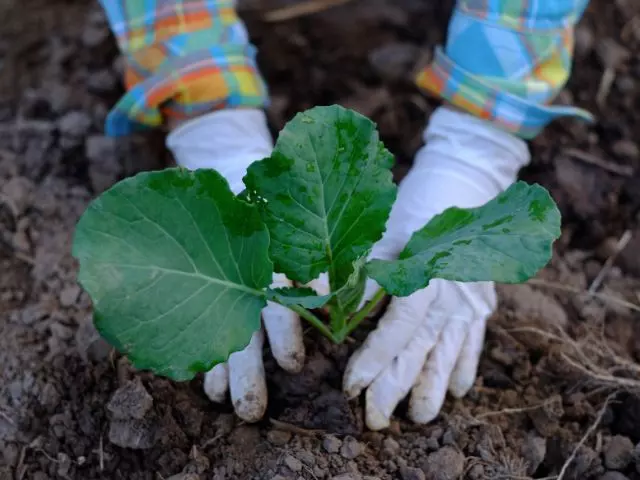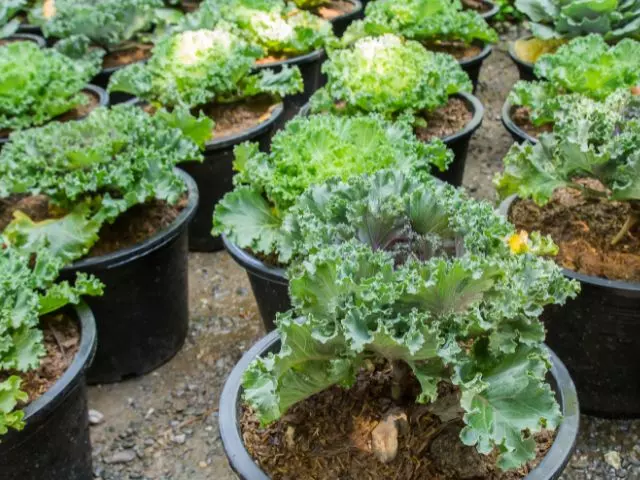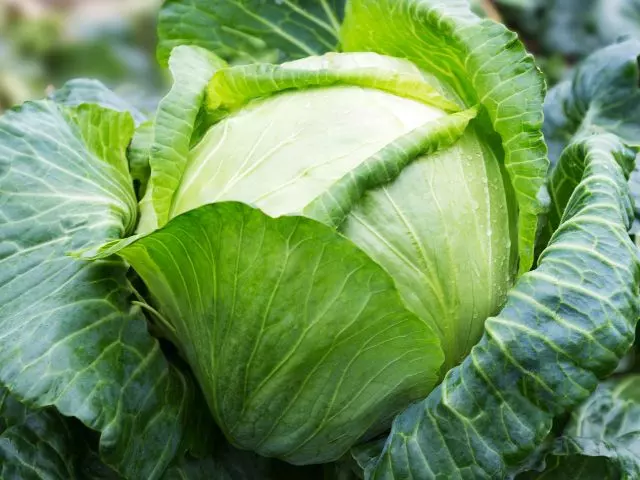Cabbage needs water to develop and grow properly. Variations in moisture levels while the crops are maturing can lead to the splitting of the heads. That is why it is essential to water cabbage properly. Proper watering of cabbage will ensure an abundant and quality crop. Knowing the right time to water cabbage to avoid fungal diseases is also important. Continue reading to learn how often to water cabbage.
Table of Contents
How Often to Water Cabbage
How Often to Water Cabbage? Provide thorough but spaced-out watering for cabbage, aiming to keep the soil moisture consistent. Ideally, you should supply approximately 1-2 inches (2.5 – 5 cm) of water weekly. If available, opt for a drip irrigation system to conserve water efficiently.
Applying mulch around the plants will aid in retaining soil moisture and suppressing weed growth. Be cautious of moisture fluctuations during heading, as they can lead to the splitting of maturing cabbage heads.
Recommended Post: How to Get Rid of Mushrooms in Mulch
If your area has sufficient rainfall, you may not need to water as often. Before watering, check soil moisture to avoid overwatering. Overwatering cabbage can cause diseases such as root rot and other fungal diseases.
How Often to Water Cabbage Seedlings
How Often to Water Cabbage Seedlings? Watering frequency for cabbage seedlings is crucial during their early growth stages to help establish healthy root systems and promote vigorous growth.
After sowing the cabbage seeds or transplanting the seedlings into the garden, you should give them a gentle and thorough watering. That helps settle the soil around the roots and ensures good soil-to-root contact.
Water them daily for the first week or until the cabbage seedlings have been established. Seedlings are more susceptible to drying out, so maintaining consistent moisture during this period is essential.
As the cabbage seedlings grow and become more established, you can gradually reduce the watering frequency. Start watering every other day or every two days, depending on the weather conditions.
Check the moisture level of the soil around the cabbage seedlings. Insert a stick about 1″ (2.5 cm) into the ground to check for moisture. If the soil is dry, it is time to water the cabbage. Alternatively, you can use a moisture meter to check the moisture level in the soil.
You may need to water cabbage seedlings more frequently during hot and dry weather. In contrast, cooler and rainy periods might require less frequent watering.
Be cautious not to overwater the seedlings, as excessively wet soil can lead to root rot and other issues. Ensure the soil drains well and the plants do not sit in standing water.
Around the cabbage seedlings, spreading a thin layer of organic mulch can aid in soil moisture retention, lessen evaporation, and safeguard the plants from harsh temperature changes.
As the cabbage seedlings grow and mature, their watering needs will change. Once they reach the active growth phase and develop their first true leaves, you can follow the guidelines for watering mature cabbage plants mentioned earlier.

How Often to Water Cabbage Plants in Pots
How Often to Water Cabbage Plants in Pots? Take care while watering cabbage plants in pots to ensure they receive enough moisture without becoming waterlogged. The amount of watering required will vary depending on the size of the pots, the climate, and the unique requirements of the cabbage plants. You can use the following tips to choose how often to water cabbage plants in pots:
Always check the moisture in the substrate before watering cabbage plants in pots. Insert a stick into the substrate, and if no moisture or soil sticks to the stick when you remove it, it is time to water the potted cabbages.
Make sure pots have enough drainage holes to prevent water from accumulating in the pot. Root rot and other issues might result from waterlogged soil. Remember that you will need to water more frequently because water tends to evaporate more quickly in smaller pots.
You might need to water more regularly when it is hot and dry outside because the cabbage plants will need more water.
The type of potting mix used can affect water retention. A high-quality potting mix with good moisture retention capacity can help reduce watering frequency. Applying a thin layer of organic mulch over the potting mix can help retain moisture and reduce evaporation.
As a general guideline, you may need to water cabbage plants in pots approximately 2-3 times per week during the active growth phase, but this may vary depending on the factors mentioned above.

When to Water Cabbage?
When to Water Cabbage? Watering in the early morning is generally the best time for most plants, including cabbage. The air is refresher, and the winds are usually calmer, which helps reduce water loss due to evaporation. Watering early in the day allows the plants to absorb moisture before the sun becomes too intense.
It is best to avoid watering cabbage during the hottest part of the day, typically between 10 a.m. and 4 p.m. High temperatures and intense sunlight can cause water to evaporate quickly, reducing the effectiveness of the watering and potentially stressing the plants.
If you can not water in the morning, the late afternoon (after 4 p.m.) is another suitable time to water cabbages. The temperatures are usually cooler than midday, and the plants have time to absorb water before dusk.
While watering in the evening is not the ideal time, if you have to do it, try to do so a few hours before sunset. That allows the foliage to dry before nighttime, reducing the risk of fungal diseases that thrive in wet conditions. Avoid wetting the leaves if possible, and focus on watering the soil around the base of the plants.
Before watering cabbage, always check the moisture in the soil with the methods explained above. Overwatering is not suitable for any plant and should always be prevented.

Final Conclusions About Watering Cabbage
So, how often to water cabbage? In conclusion, the frequency of watering cabbage plants depends on several factors, such as climate, soil type, stage of growth, and weather conditions. During the establishment phase, cabbage plants need frequent watering to establish their root systems, typically 2-3 times weekly. As they enter the active growth phase, 1-2 times per week is generally sufficient to maintain consistent soil moisture.
Throughout the growth stages, it is crucial to monitor soil moisture regularly to avoid overwatering or underwatering, both of which can negatively impact plant health. The early morning is the best time to water cabbage, allowing plants to absorb moisture before the sun intensifies, reducing water loss due to evaporation.
Overall, maintaining consistent and appropriate watering practices while considering the cabbage plants’ specific needs is essential for their healthy growth and successful harvest. For a successful cabbage harvest, I recommend you read our article How do you know when cabbage is ready to harvest?
